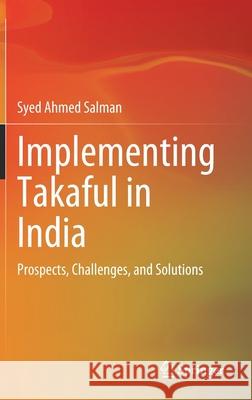Implementing Takaful in India: Prospects, Challenges, and Solutions » książka
topmenu
Implementing Takaful in India: Prospects, Challenges, and Solutions
ISBN-13: 9789811662805 / Angielski / Twarda / 2021 / 144 str.
Implementing Takaful in India: Prospects, Challenges, and Solutions
ISBN-13: 9789811662805 / Angielski / Twarda / 2021 / 144 str.
cena 403,47
(netto: 384,26 VAT: 5%)
Najniższa cena z 30 dni: 385,52
(netto: 384,26 VAT: 5%)
Najniższa cena z 30 dni: 385,52
Termin realizacji zamówienia:
ok. 22 dni roboczych
Bez gwarancji dostawy przed świętami
ok. 22 dni roboczych
Bez gwarancji dostawy przed świętami
Darmowa dostawa!
This book encourages insurance companies and regulators to explore offering Islamic insurance to boost the insurance industry in India. The distinctive features of Takaful also make it appealing even to non-Muslims. According to the 2012 World Takaful Report, India has immense potential for Takaful is based on the size of its Muslim population and the growth of its economy. However, it is surprising that Takaful has yet to be introduced in India since it has been offered in non-majority Muslim countries, such as Singapore, Thailand, and Sri Lanka. When the concept and practice of Takaful are examined, it is free from interest, uncertainty, and gambling. These are the main elements prohibited in Islam. However, it has been evidenced that these elements are also banned in teaching other religions believed by the Indians. Given this landscape, this book fills the gap in research on the viability of Takaful in India, focusing on its empirical aspects by examining the perception of Indian insurance operators toward Takaful.











